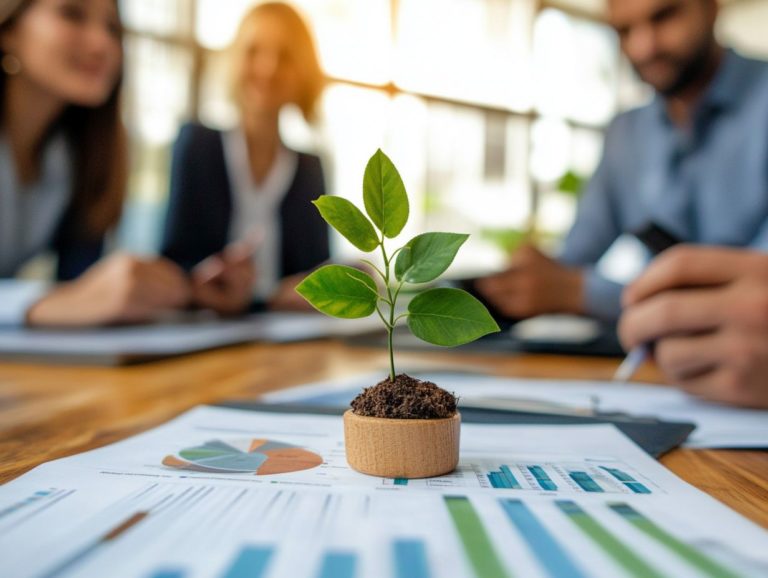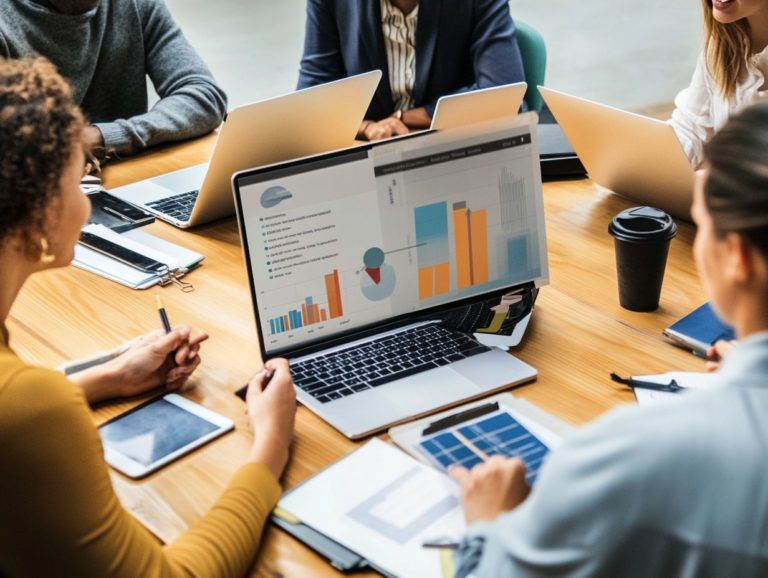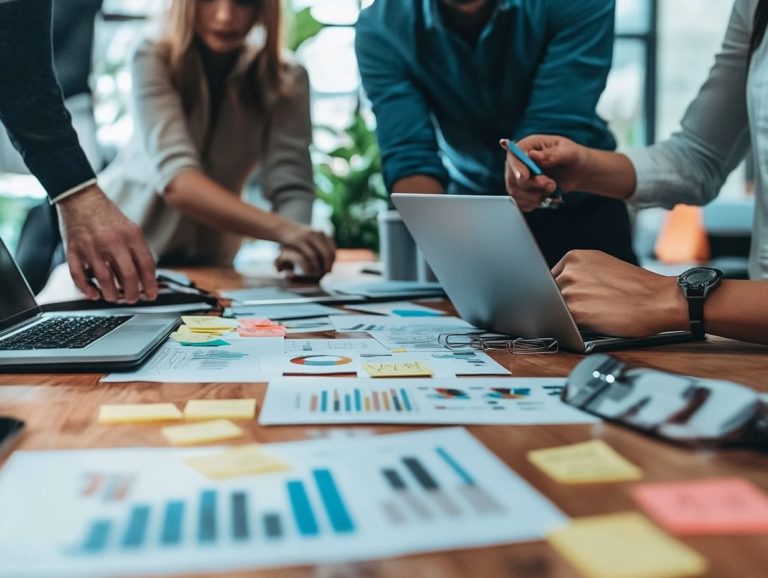How to Start Investing in Precious Metals?
Investing in precious metals is a smart and exciting way to diversify your portfolio and protect your wealth.
From gold and silver to platinum and palladium, these tangible assets offer unique advantages and challenges.
This discussion will explore the various types of precious metals available. We ll highlight how they can enhance your investment strategy and guide you on how to begin.
We will also explore the risks and considerations that need your attention. This will empower you to make informed decisions on your investment journey.
Contents
- Key Takeaways:
- Types of Precious Metals to Invest In
- How to Start Investing in Precious Metals
- Risks and Considerations in Precious Metal Investing
- Frequently Asked Questions
- What are precious metals and why should I consider investing in them?
- What is the best way to start investing in precious metals?
- What are the benefits of investing in physical precious metals?
- Are there any risks associated with investing in precious metals?
- Are there any tax implications when investing in precious metals?
- Is it necessary to have a large sum of money to start investing in precious metals?
Key Takeaways:
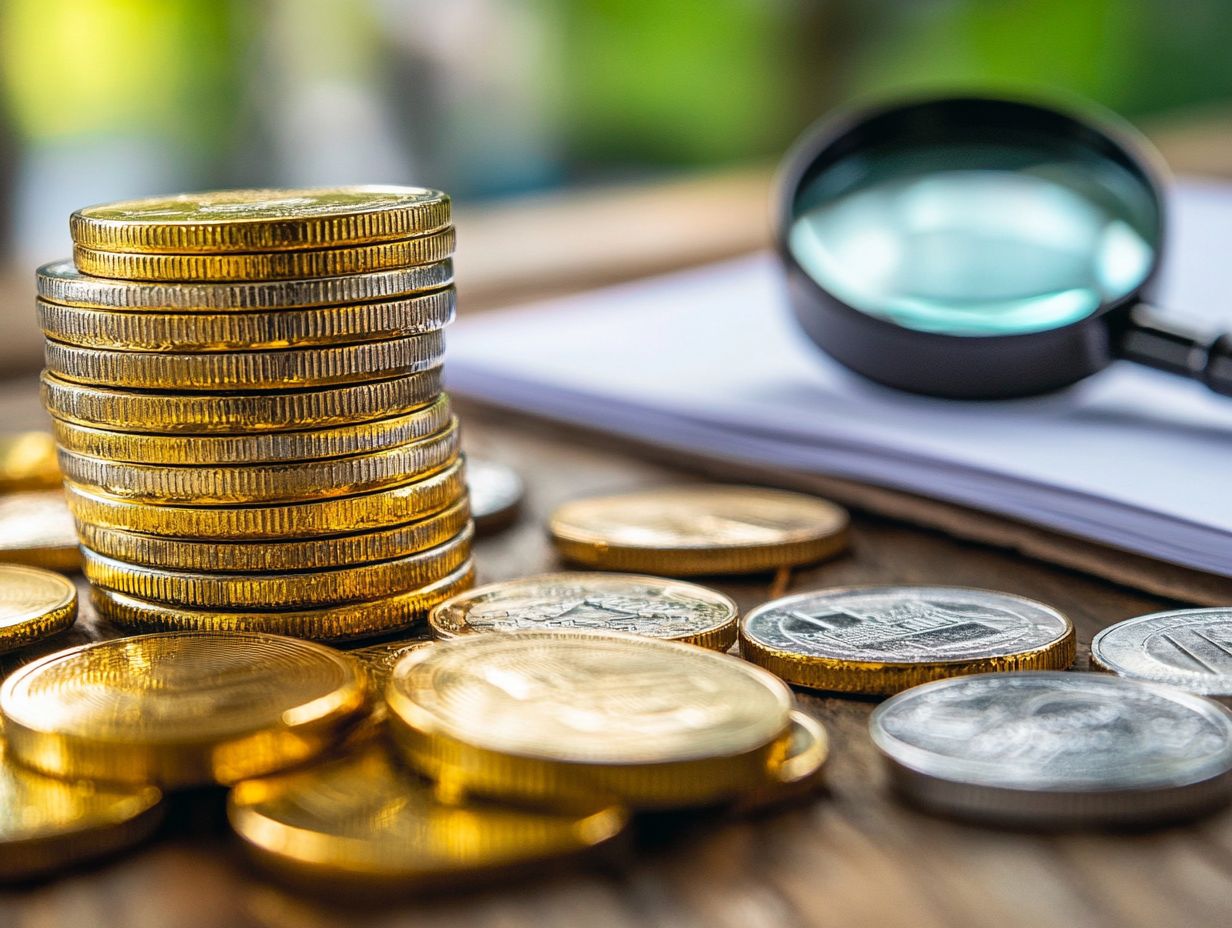
Understand the different types of precious metals to invest in, such as gold, silver, platinum, and palladium.
Set clear investment goals and conduct thorough research before choosing a precious metal.
Consider the risks and tax implications of investing in precious metals, including market volatility and the importance of diversification.
What are Precious Metals?
Precious metals are naturally occurring elements with real value, often used in various investment products.
Gold, silver, platinum, and palladium are not only beautiful but also serve as a hedge against inflation, providing diversification, especially during economic uncertainty.
Their unique properties, like high conductivity and exceptional corrosion resistance, make them essential in industries such as electronics and automotive manufacturing.
As tangible assets, precious metals offer a sense of security that digital investments cannot match, often retaining their value in economic downturns.
Demand for these metals fluctuates with market trends and geopolitical events, so staying informed about price movements is crucial for savvy investors.
Their roles in jewelry and technology highlight their significance in our economy, making them a reliable choice for preserving and growing wealth.
Why Invest in Precious Metals?
Investing in precious metals offers a unique opportunity for capital growth while protecting you against economic uncertainty and inflation.
These metals can enhance your portfolio by providing diversification and often yield stable returns during market fluctuations.
By allocating some of your assets to gold, silver, and other precious metals, you create a buffer against unpredictable stock market shifts.
Historically, these assets have maintained their value, even during hyperinflation or economic downturns, reinforcing their reliability.
With various strategies available like purchasing physical bullion, ETFs (Exchange-Traded Funds), or mining stocks you can tailor your approach to match your risk tolerance and market conditions.
Incorporating precious metals into your diversified portfolio can amplify potential returns while protecting your overall capital.
Types of Precious Metals to Invest In
As you explore investment opportunities in precious metals, you ll consider options like gold, silver, platinum, and palladium. Each has unique characteristics and advantages.
These metals are used in various industries and exhibit distinct market trends that can impact share prices and your investment returns.
Gold
Gold is the most prestigious of precious metals. It retains value during economic uncertainty, making it a smart choice for investors like you.
Its price changes with market conditions, central bank demand, and its reputation as a hedge against inflation. Historically, gold has been resilient, often outperforming other assets during financial crises.
It also plays a unique role in spreading out your investments, balancing stocks and bonds.
As global economies face inflation, geopolitical tensions, and currency changes, gold s appeal grows. Mining production, interest rates, and market sentiment can all significantly impact its value.
Understanding these factors is crucial for anyone looking to navigate gold investments effectively.
Silver
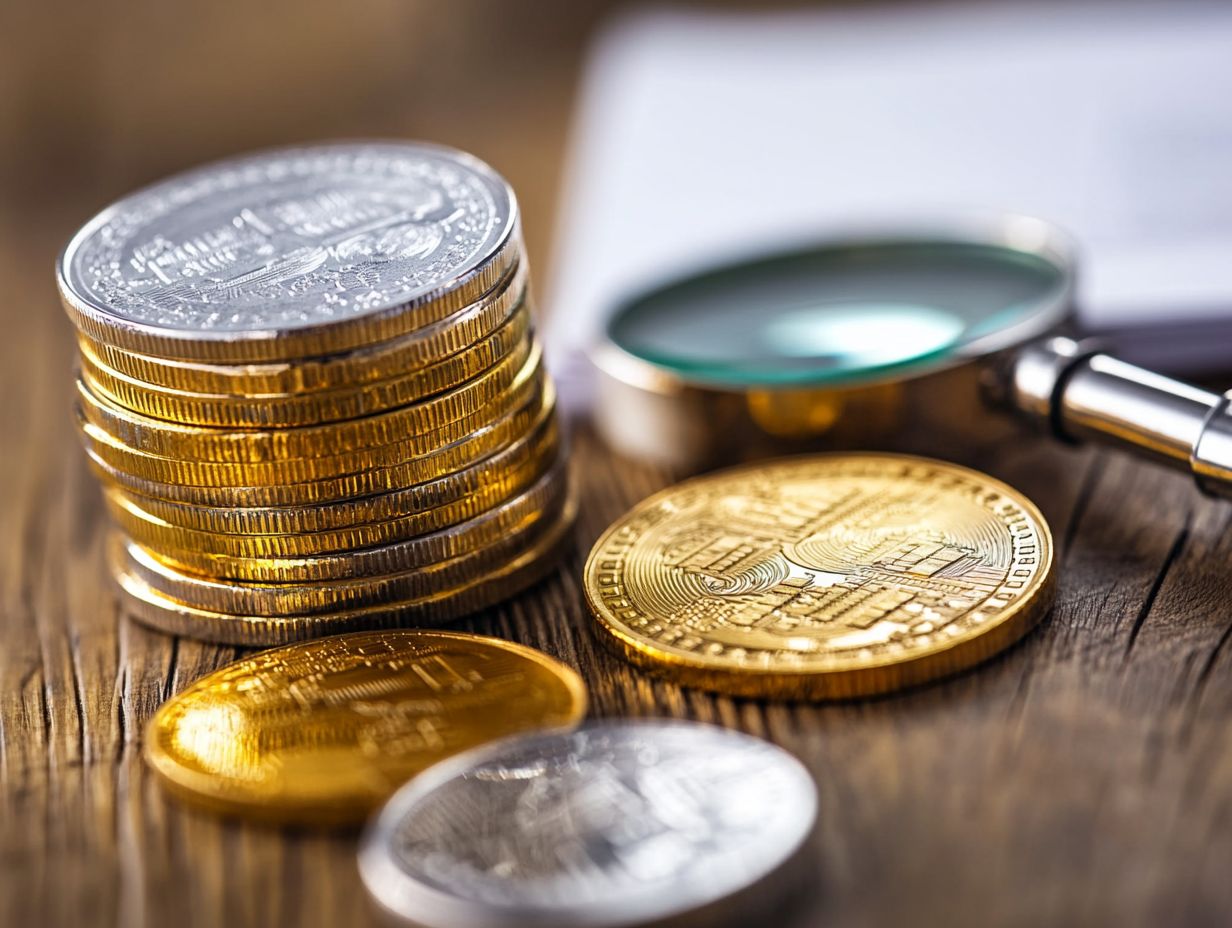
Silver is an accessible alternative to gold. It serves both as an investment and in various industrial applications, like electronics and solar panels.
As you diversify against economic uncertainty, silver s dual role as a precious metal and industrial commodity is appealing. The demand for technology, including electric vehicles, boosts its importance.
Market trends show that silver’s price often reflects economic conditions. Staying updated on technology and geopolitical events can help you succeed in this dynamic market.
Platinum
Platinum is a rare and valuable metal known for its industrial uses, especially in vehicles and electronics. Its unique market behavior can differ from gold and silver.
Platinum’s rarity makes it a compelling option for diversifying your investments. Its role in reducing vehicle emissions highlights its importance in the move toward greener technologies.
Supply and demand changes, geopolitical factors, and economic stability all affect platinum s market value. This makes it attractive for investors eager to explore new opportunities.
Palladium
Palladium is gaining attention due to its role in reducing vehicle emissions and growing demand from various industries. It presents unique investment opportunities and challenges.
Palladium is crucial for catalytic converters in cars. It is also used in electronics and dental materials, further driving demand.
Understanding factors like geopolitical tensions and mining supply constraints is essential. Staying informed can help you seize opportunities in palladium investments.
Consider diversifying with exchange-traded funds (ETFs) and futures contracts to manage risks. Knowing how industrial applications affect supply and demand will help you make informed choices.
How to Start Investing in Precious Metals
Investing in precious metals requires careful planning and a clear understanding of your goals. Equip yourself with knowledge by following this guide to investing in precious metals to navigate the market effectively.
Whether you buy physical metals or invest in stocks and ETFs, creating a strong strategy is crucial for success in this asset class.
Setting Investment Goals
Setting clear investment goals is the first step for anyone venturing into precious metals. This clarity provides focus for your financial planning.
By defining your objectives like capital growth, diversification, or inflation protection you can tailor your strategies. This simplicity helps you make decisions without getting too emotional during market ups and downs.
For instance, if you prioritize wealth preservation, you might lean toward more stable options like gold or silver. If aggressive growth is your aim, exploring emerging markets or innovative precious metal investments could be more appealing.
Aligning your short-term and long-term objectives will shape your portfolio, influencing key factors such as liquidity needs and risk tolerance. Well-defined goals allow for a more cohesive and effective investment plan in the ever-changing landscape of precious metals.
Researching and Choosing a Precious Metal
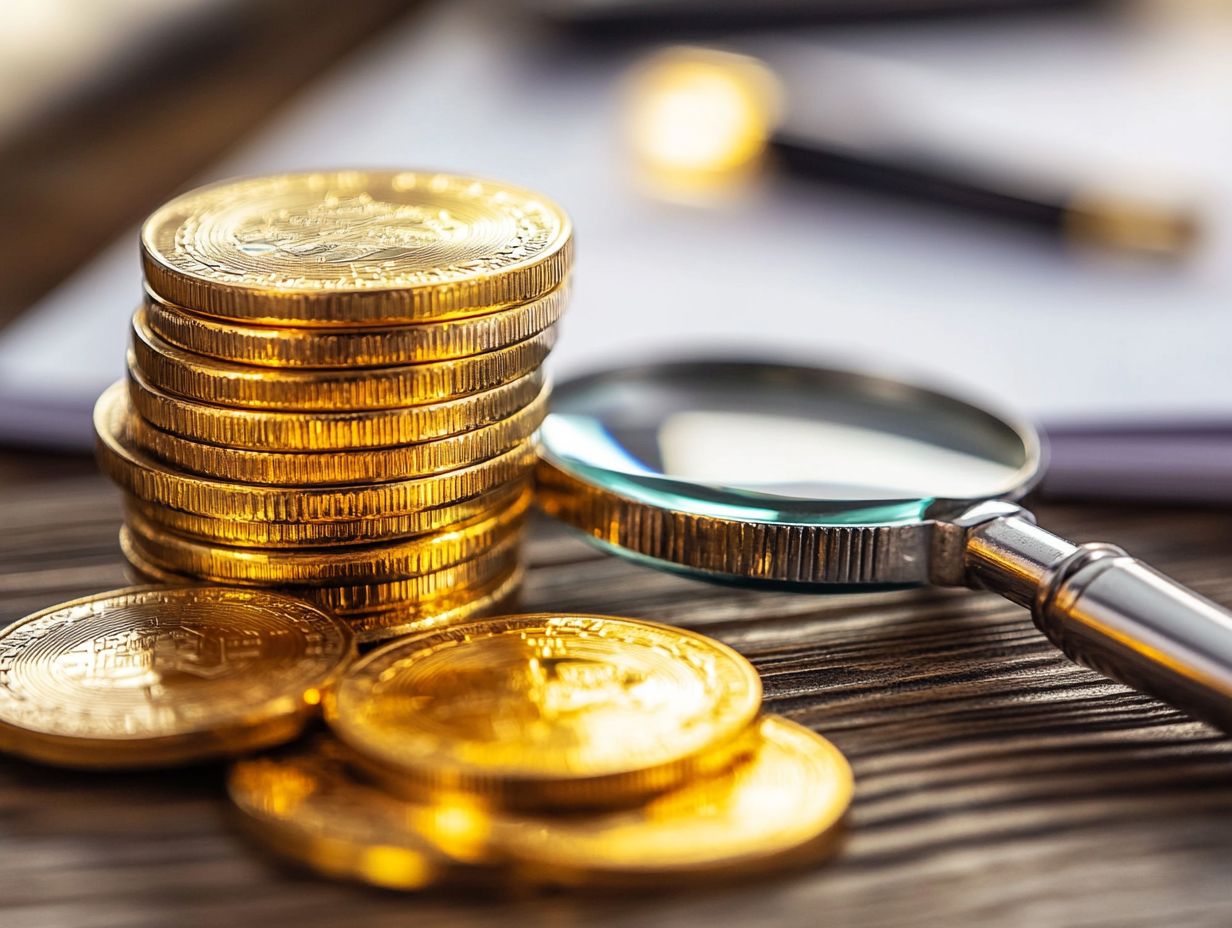
Conducting thorough research is paramount when selecting which precious metal to invest in, as each metal presents its own distinct market trends, investment products, and risk factors. Your due diligence is crucial for understanding potential returns and how geopolitical factors might influence prices.
Begin by analyzing current market conditions, including demand and supply dynamics, which can significantly impact pricing. Pay attention to key indicators such as inflation rates, interest rates, and currency strength, as these often determine the appeal of precious metals like gold, silver, and platinum.
By monitoring these metrics, you can assess potential investment viability and navigate risks more effectively. Equip yourself with insights from credible sources and expert analyses to make confident decisions, ultimately increasing your chances of securing favorable returns in a fluctuating market.
Buying and Storing Precious Metals
Buying and storing precious metals is not just about acquiring these valuable assets; it s also about knowing how to securely store them. Secure storage is vital. You can use safe deposit boxes or home safes, but both have pros and cons.
You have several avenues when it comes to purchasing these commodities. You can invest in exchange-traded funds (ETFs), which are investment funds traded on stock exchanges, or explore physical products like coins and bars. To understand more about this market, it’s helpful to know what to know about trade in precious metals. Each option presents its own set of advantages and risks.
ETFs provide the liquidity and ease of trading that many investors appreciate, while physical metals offer the peace of mind that comes with holding a tangible asset.
When considering storage, factor in safety features, insurance policies, and accessibility. Professional vaults may provide advanced security systems that significantly reduce theft risks, while home safes can be a cost-effective solution if set up correctly.
Explore these exciting options to tailor your investment strategy, ensuring that both the acquisition and safeguarding of your precious metals align seamlessly with your financial aspirations.
Risks and Considerations in Precious Metal Investing
Investing in precious metals carries risks and considerations, including market volatility that can significantly affect your investment returns.
Grasping these factors is essential for effective diversification and ensuring your investment strategy aligns with your risk tolerance and financial objectives.
Market Volatility and Diversification
Market volatility can significantly impact the performance of precious metals. Therefore, it’s essential to consider diversification as a key strategy to mitigate risk.
By spreading your investments across various assets, you can reduce your exposure to unfavorable market conditions and enhance your overall portfolio performance. This approach allows you to balance your holdings in precious metals with other investment vehicles, such as stocks, bonds, and real estate.
During times of economic uncertainty, precious metals often act as a safe haven, providing stability. However, it’s crucial to explore other asset classes that may offer growth potential.
Effective financial planning means assessing your risk tolerance and time horizon. This ensures that your portfolio not only withstands market fluctuations but also capitalizes on potential growth opportunities. Such strategic allocation fosters a resilient investment framework that can adapt to changing circumstances.
Tax Implications
Understanding the tax implications of investing in precious metals is vital for maximizing your returns and ensuring compliance with reporting requirements.
Different investment products, whether physical metals or ETFs, which are funds that trade on the stock exchange, can be subject to varying tax treatments that significantly affect your overall financial strategy.
Be aware that the IRS classifies precious metals as collectibles. This classification means selling physical bullion could expose you to capital gains tax rates of up to 28%.
If you invest in ETFs that track precious metal prices, the tax treatment is typically more favorable. Gains are often subject to standard capital gains tax rates that range from 0% to 20%, depending on your income level.
Make sure to report any gained assets on your annual tax return in a timely manner to keep your investments safe and sound!
As a savvy investor, you might want to explore strategies like holding your metals in tax-advantaged accounts, such as IRAs. These options could offer opportunities for tax deferral and help reduce your immediate tax obligations.
Frequently Asked Questions
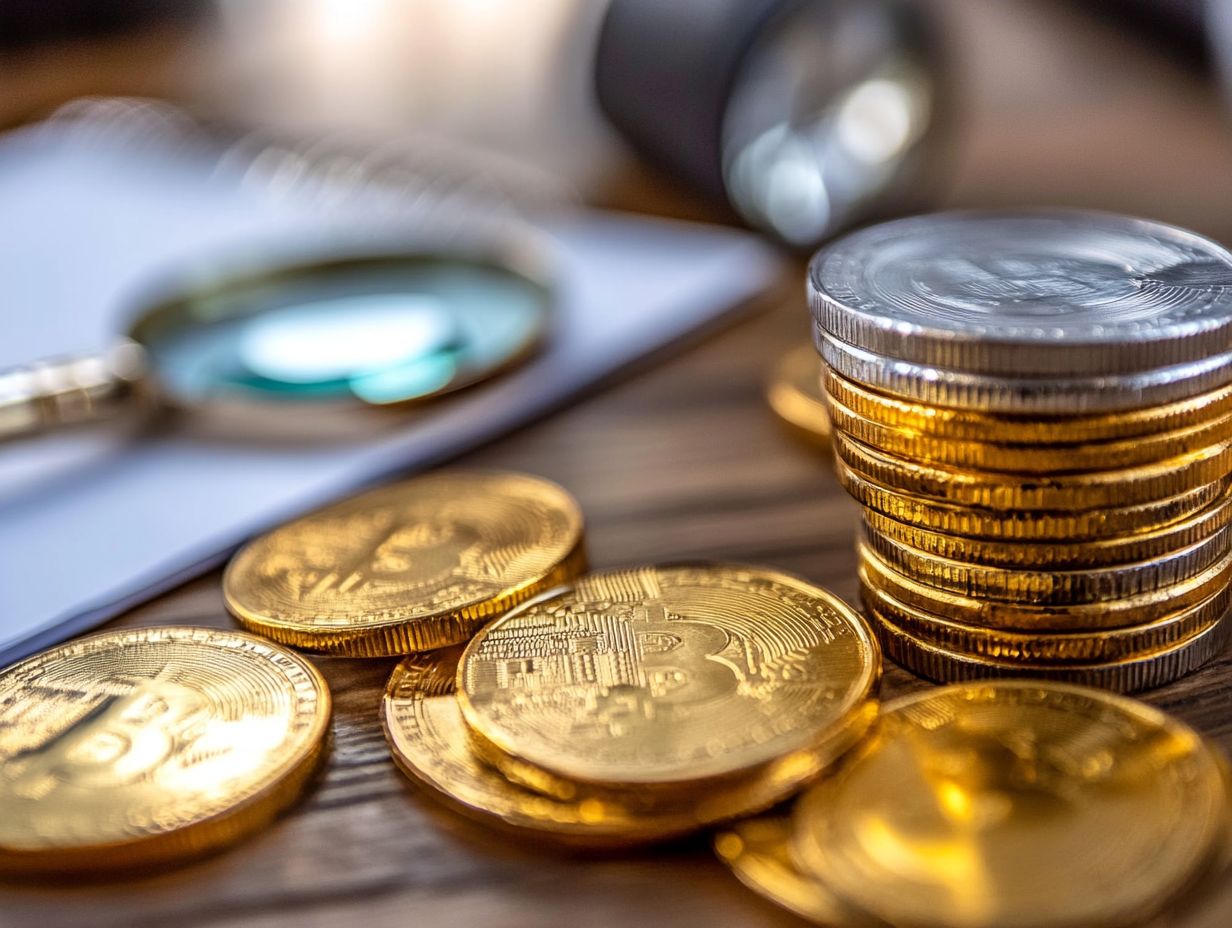
-
What are precious metals and why should I consider investing in them?
Precious metals, such as gold, silver, platinum, and palladium, are rare and valuable natural resources. They have been used as a form of currency and a store of value for thousands of years. Investing in precious metals can provide diversification in your portfolio and act as a hedge against inflation and economic uncertainties.
-
What is the best way to start investing in precious metals?
The best way to start investing in precious metals for retirement is to do your research and determine which metals and investment methods suit your financial goals and risk tolerance. You can invest in physical metals through bullion or coins, or through financial products like ETFs or mining stocks.
-
What are the benefits of investing in physical precious metals?
Investing in physical precious metals allows you to have full ownership and control over your assets. You can physically hold them or store them in a secure location. They also have intrinsic value and can potentially increase in value over time.
-
Are there any risks associated with investing in precious metals?
As with any investment, there are risks involved in investing in precious metals. The value of these metals can be affected by market fluctuations, economic conditions, and supply and demand. There is also the risk of theft or damage if you hold physical metals.
-
Are there any tax implications when investing in precious metals?
Yes, there are tax implications when investing in precious metals. Any profits made from selling precious metals are subject to capital gains tax, which is a tax on the profit when you sell an asset. It is important to consult with a tax professional to understand the specific tax laws and regulations in your country or state.
-
Is it necessary to have a large sum of money to start investing in precious metals?
No, it is not necessary to have a large sum of money to start investing in precious metals. You can start with small amounts and gradually increase your investment as you become more comfortable and knowledgeable about the market. For those interested, understanding the top precious metals to invest in can also provide valuable insights. There are options for fractional ownership of physical metals or investing in ETFs that allow for smaller initial investments.
Start your precious metals investment journey today!


